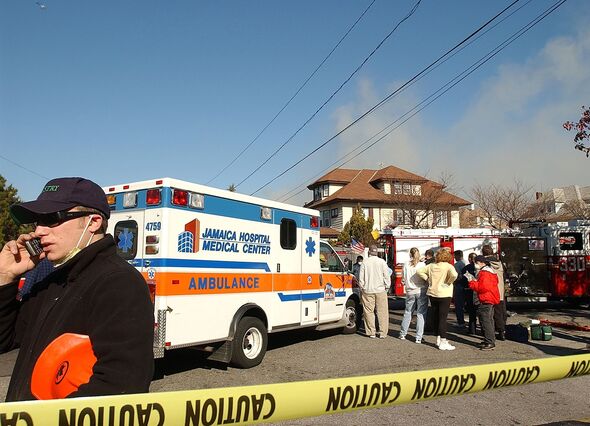A horror plane crash killing 265 passengers, and five people on the ground, happened just weeks after 9/11 in an already high-alert New York City. After a lengthy investigation into how it happened, the plane’s cockpit recording unveiled the pilot’s harrowing last words, moments before impact.
On November 12, 2001, American Airlines Flight 587 caught turbulence from a Japan Airlines plane in front of it and began a sideslip which caused its vertical stabiliser to fail and separate from the aircraft.
After losing the stabiliser it began to nosedive entering a flat spin as pilots struggled to control it with both engines being sheared from its wings.
Eventually, the plane crashed into Belle Harbour in New York’s Queens district between Newport Avenue and Beach 131st Street killing everyone onboard as well as five people on the ground.
Shortly before the plane collided with the ground the cockpit recorder captured 34-year-old first officer Sten Molin’s last words.
He said: “What the hell are we into, we’re stuck in it.” The plane’s captain Edward States, 42, can then be heard replying: “Get out of it, get out of it.”
Due to the fact the crash happened just two months and one day after the September 11 attacks, which also took place in New York, several major buildings, including the Empire State Building and the headquarters of the United Nations, were evacuated.
Rumours had circulated that the crash was the result of a terrorist plot prompting anger in the US but eventually, an investigation found no evidence of a terrorist travelling on board.
The investigation took three months, saw 349 interviews conducted and parts of the plane collected and reconstructed.
The US’s National Transportation Safety Board (NTSB) concluded that the enormous stress on the vertical stabiliser was due to the first officer’s “unnecessary and excessive” rudder inputs and not the wake turbulence caused by the Japanese 747 in front.
The NTSB further stated that “if the first officer had stopped making additional inputs, the aircraft would have stabilised”.
Other contributing factors were deemed to be the characteristics of the Airbus A300-600’s sensitive rudder system design and elements of the American Airlines Advanced Aircraft Maneuvering Training Program.
As to why the vertical stabiliser detached, the NTSB concluded that the material had failed because it had been stressed beyond its design limit.
